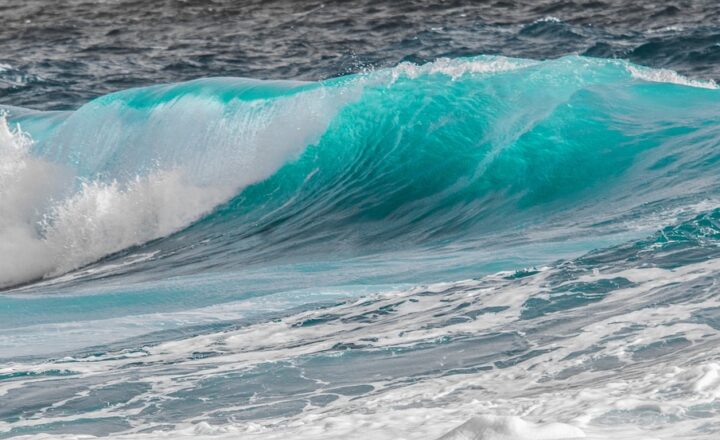Understanding Tides: The Role of the Moon, Sun, and Earth in Ocean Movement
November 14, 2024

Tides are among the most fascinating natural phenomena on Earth. Governed by the gravitational forces of the Moon, the Sun, and the Earth’s own rotation, tides shape coastal landscapes and have profound effects on marine life. Understanding the mechanics of tides is crucial for various fields, from navigation to ecology. In this article, we will explore the science behind tides, examining how these colossal movements of water impact not only our environment but also our daily lives.
—
1. What Are Tides?
Tides are the rise and fall of sea levels caused primarily by the gravitational pull of the Moon and, to a lesser extent, the Sun. This fluctuation occurs generally in a rhythmic pattern, typically every 12 hours and 25 minutes, resulting in two high tides and two low tides each day.
The difference between high tide and low tide can vary significantly depending on the location, weather conditions, and the positions of the celestial bodies involved. Understanding these variations is essential for activities such as fishing, boating, and coastal management.
—
2. The Gravitational Dance: Moon and Sun
The gravitational pull from celestial bodies is the primary driver of tidal movements. The following points explain the interactions between the Moon, Sun, and Earth:
#
A. The Moon’s Role
The Moon is the most significant celestial influencer of tides. Since it is closer to Earth than the Sun, its gravitational pull is stronger, creating what we call a tidal bulge in the oceans. This bulge is formed on the side of Earth that faces the Moon, while another bulge occurs on the opposite side as Earth’s rotation slightly lags behind the gravitational pull.
#
B. The Sun’s Role
Although the Sun is much larger than the Moon, its distance from Earth dampens its gravitational influence on tides. However, its effect does contribute to tidal patterns, especially during new and full moons when the Sun, Moon, and Earth align (a phenomenon referred to as ‘spring tides’). During these times, tides can be significantly higher or lower than average.
—
3. How Tides Work: Daily Cycles
Tides operate through four main phases: high tide, low tide, ebb tide, and flow tide. Understanding these phases helps clarify how tides work within a daily cycle:
#
A. High Tide
High tide is when water levels peak, resulting in the ocean occupying the greatest vertical position relative to the land. This usually occurs approximately every 12 hours.
#
B. Low Tide
Just as high tide occurs, low tide represents the lowest point of water levels, exposing parts of the shoreline that are usually underwater. The transition from high to low tide occurs during the ebb tide.
#
C. Ebb and Flow Tides
The ebb tide refers to the outgoing tide, while flow tide refers to the incoming tide. The interplay between these cycles creates a dynamic and rhythmic movement of water continuously reshaping coastal environments.
—
4. Monthly Variations: Spring and Neap Tides
In addition to daily cycles, tides are influenced by monthly variations resulting in spring and neap tides:
#
A. Spring Tides
Spring tides occur during new and full moons when the gravitational forces of the Moon and Sun work together, resulting in especially high and low tides. The term ‘spring’ does not refer to the season but originates from the idea of the tides ‘springing’ to their highest or lowest levels.
#
B. Neap Tides
Conversely, neap tides occur during the first and third quarters of the lunar cycle when the Moon and Sun are at right angles relative to Earth. This configuration causes lower high tides and higher low tides, resulting in a smaller difference between the two.
—
5. The Impact of Tides on Marine Life
Tides play a crucial role in the ecological dynamics of coastal ecosystems. The rhythmic rise and fall of water levels influence:
#
A. Habitat Availability
Tides create and destroy habitats, exposing intertidal zones that are rich in biodiversity. These areas serve as breeding grounds and feeding areas for various marine species.
#
B. Nutrient Distribution
The movement of tides facilitates the exchange of nutrients and sediments, promoting healthy ecosystems and marine biodiversity. Nutrient-rich waters flood into estuaries, supporting life cycles for many aquatic organisms.
—
6. Tides and Human Activity
Understanding tides is not just for scientists; it is critical for various human activities:
#
A. Fishing and Aquaculture
Fishermen rely on tide tables to determine optimal fishing times, with certain species being more active at specific tidal phases. Aquaculture operations also synchronize breeding and harvesting with tidal cycles.
#
B. Navigation and Boating
Tides affect water depth, impacting navigation in coastal and riverine environments. Understanding local tidal schedules can prevent accidents and ensure vessels do not run aground.
#
C. Coastal Development
Coastal areas must consider tidal fluctuations in urban planning for infrastructure like ports, marinas, and seawalls. Miscalculating tidal impacts can lead to flooding or structural failures during high tide events.
—
7. Conclusion
Tides are a fundamental aspect of our planet’s natural processes, intricately linking the Moon, Sun, and Earth. Their rhythmic patterns influence marine ecosystems, human activities, and coastal landscapes. By gaining a deeper understanding of tides, we can appreciate their role in our lives and the health of our planet.
Next time you visit the beach, take a moment to observe the tides and consider the immense natural forces at play. Tides remind us of the delicate balance in nature, shaped by celestial relationships that continue to captivate scientists and nature enthusiasts alike.







